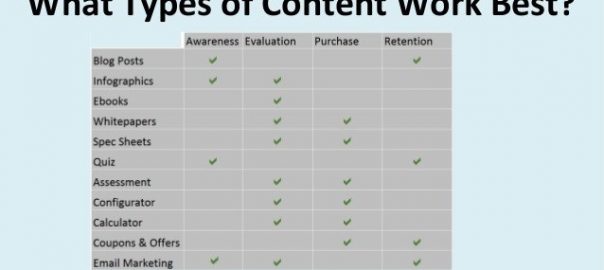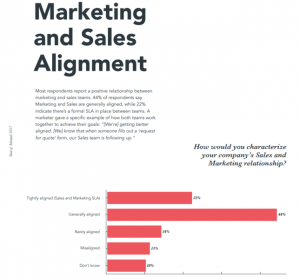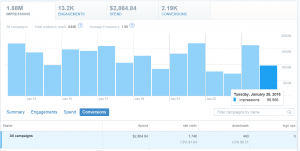
What if I told you that one big idea can supply the topics of all your marketing content for the next few months and that you don’t need to break the bank every time you need content created?
I know it sounds like a pipe dream. After all, the top performing businesses in 2016 allocated 39% of their total marketing budget to content marketing, according to 2017’s Benchmarks, Budgets, and Trends report. This continues the trend we’ve seen over the past few years—that the most effective content marketing is born from big budgets.
However, the secret to success isn’t spending more—it’s spending smarter.
Repurposing content is your golden ticket to spending less time in ideation and research, meeting your clients at every stage of the funnel, and stretching one big idea for months on end.
What Is Repurposed Content?
Repurposed content is the act of taking one big, valuable piece of content you’ve created and then taking the research and insights you gained and using them to make new content.
To be clear, repurposing content does not mean taking a blog post that did relatively well and rewriting it fifteen times for different venues. Instead, you need to take something that’s comprehensive and use its components to create other smaller pieces of equally valuable content that all complement your original offering.
Business Casual Copywriting’s Joel Klettke, an authority on repurposing content, calls the big, valuable pieces of content you start with “cornerstone assets”— he describes them as “the largest/most comprehensive resource you will create.” He lists guides, whitepapers, and ebooks as examples.
As a side note, creating cornerstone content has been named #1 link building in a recent SEO survey: 40% of respondents said creating data- and research-based content is their most efficient link building method.
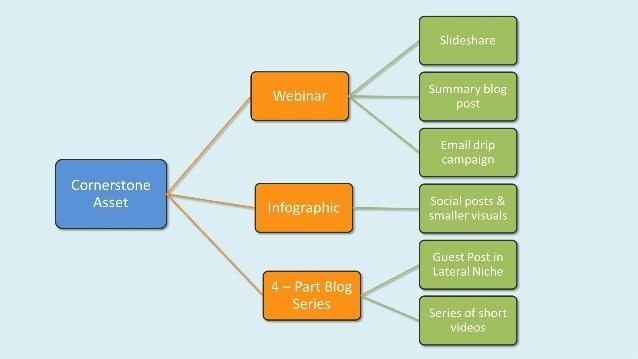
The best type of cornerstone asset you create is called “evergreen”—it’s content that stays relevant long after it’s created. Writing about breaking news might net you more views immediately after publication, but if your content is very situational then it date’s itself—and quickly becomes irrelevant.
So when creating your cornerstone asset, try to choose topics that are both relevant and timeless.
After you’ve created your cornerstone asset, you can then take your new insights and expand them into smaller pieces of content. Each new piece of content will touch on aspects of your cornerstone content, without covering the same depth or breadth as the original.
CTAs on these new assets might link back to the cornerstone asset, or they might push your readers deeper into your sales funnel.
Why Repurpose Content?
Creating content is a challenge for many businesses because creating something of value is not as simple as tapping away at your keyboard for thirty minutes and penning a smash hit.
The best content is always:
- Backed by customer research, to help you discover their pain points.
- Built out of ideation on how you can best offer a unique solution to their pain points.
- Built on a strategy that will help your customers and engage them at a specific place in their buyer’s journey.
- Informed by content your competitors have created on the same topic.
- Created for a specific purpose (e.g. to push your customers to the next stage of the funnel).
- Contributing new, valuable and/or entertaining insights to your topic.
- Of a relatively high production value, with both visuals and content that are engaging the whole way through (customers read to the end and click on your CTA).
Keep in mind that the customer research phase alone demands time spent polling customers, searching for queries and trends, conducting interviews and surveys, lurking on sites like Reddit and Quora, questioning your customer service department, and pulling metrics on scroll depth, bounce rates, click-throughs, likes, shares, downloads, etc.
Imagine pouring this amount of effort into every single piece of content. Now imagine publishing 5+ pieces of content per week, each with this amount of effort.
The sad truth is that most content is bland, offering nothing of value to its readers. While most businesses recognize the need for content marketing (89% use content marketing and more than half of the remainder plan to start, according to CMI’s report), many businesses are still producing low-quality content because creating something of value is either too time-consuming or expensive.
Repurposing content is your solution to all of these pain points.
When you invest time, effort, and money in a big cornerstone asset, you’ll already have all the research you need when it comes time to break it up into smaller pieces of content. That means you’ll spend less time ideating and researching, and more time creating content that you know your customers will love.
How Do I Repurpose Content?
Creating a cornerstone asset isn’t easy. Remember all that time, planning, and research I mentioned? You still need to do it. The good news is that if you do it right, you’ll only need to do it once—and it will be a while before you need to commission anything of this size again.
1. Do Your Homework
Before you do anything else, you need to roll up your sleeves and dig into your customer research to find out what their pain points are and how you can solve them.
You’re looking for a big “aha!” moment, when you arrive at an idea that:
- You’re an expert in.
- Your customers are demanding.
- Has enough depth to warrant a cornerstone asset.
Make no mistake; this step is crucial if you want your cornerstone asset to succeed. Use all the information at your disposal, including CRM and onsite metrics, to arrive at a topic your customers will enjoy learning more about for the months to come.
2. Plan Out A Cornerstone Asset And Supporting Assets
Before you start writing, figure out what medium best suits your topic. An ebook? A presentation? A video? What will resonate best with your customers and generate the most leads?
When you’ve figured out what medium to work with, plan out how you’ll use your research for supporting content. Copywriter Steven Peters has some useful ideas, such as:
- Turning stats into infographics or tweeting them out.
- Reframing an ebook’s chapters as a blog series.
- Summarizing key takeaways into a FAQ sheet.
- Curating lists of research.
- Creating a SlideShare presentation.
- Writing guest posts based on your findings.
- Teasing your results in an email campaign.
3. Strategize For Content Distribution/promotion
While planning your cornerstone asset and your supporting content, identify specific pain points you can solve that will help your customers at different points of their buyer’s journey.
For example, will you establish your authority and introduce new customers to your topic (awareness) or will it be more persuasive, addressing risks that invested readers might be worrying about (purchasing)?
This chart that Joel Klettke shared in a recent SlideShare is a useful starting point for planning out your content strategy:
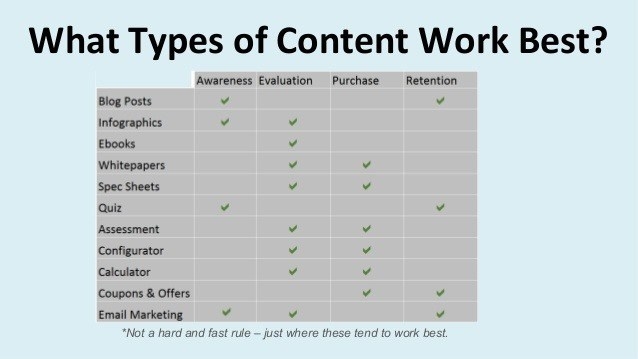
4. Compile Your Research
Now it’s time to gather all of your information. Pull metrics, poll your audience, interview customers, and figure out what your competitors are saying on the topic. Carefully annotate and record all of your information so that you can easily draw on it when you begin building your cornerstone asset.
While you can pay others to compile this research for you (and it’s well worth it, especially for things like case study interviews), I recommend doing the lion’s share of this work yourself. By doing the legwork, you’ll grow in your understanding of your topic, and you’ll be better equipped to discuss it with your audience and with other industry leaders.
5. Create Or Commission Your Cornerstone Asset
Finally, it’s time to create your asset. Bring all your research to bear to create something comprehensive that your audience will find valuable, download, and then share on your behalf. This flagship content should engage your followers and win you new leads.
If you only have a modest content marketing budget, this is where you invest it. Your goal is to produce a piece of content so valuable that it will inform and spawn all of your related content for the coming months.
6. Promote Your Content
And of course, once all is said and done, you need to promote your content. Share your asset with your followers, message other influencers operating in the same niche, and make sure every piece of supporting content links back to your cornerstone asset.
One Of My Examples
Recently, we got to practice what we preach by repurposing a research-intensive case study written by my colleague, Yauhen Khutarniuk, about using social media listening to create more targeted Twitter ads. After he published his article on our website, I then took his research and created two supporting articles with what I learned.
In 5 Ways to Use Audience Targeting to Improve Your Twitter Ads, published on Social Media Today, I expand on Yauhen’s “How To” guide with examples of how vendors can increase their effectiveness on Twitter.
I then took a different tack with my Social Media Examiner article 9 Ways to Refine Your Twitter Ad Targeting, in which I discuss how to use Twitter’s built-in features to improve your ad campaign.
Notice that we published these articles on three different websites, including our own (to build authority) and two websites with audiences deeply interested in improving their social media reach.
Also notice that all three of these articles are written on unique, albeit connected, topics and each works fine on its own. Consider them together, however, and you have three pieces of content that all contribute valuable information towards one core topic.
This is the perfect trifecta of repurposing content: one big asset worth repurposing, multiple small articles that complement the original, and a highly targeted audience eager to read about the topic.
Final Thoughts
Of course, once all is said and done, the one big idea you’ve repurposed is only worth as much as your promotion. If nobody reads your cornerstone asset, then what’s the point?
So share your asset with your followers, spread it on Facebook, and shout it from the high heavens. Do whatever you can to get your audience and other influencers to take notice.
At the end of the day, you’ll be glad you invested in one piece of high-quality content that people remember, as opposed to squandering your budget on numerous bland articles that are all indistinguishable from your competitors.
* Adapted lead image: Public Domain, pixabay.com via getstencil.com
The post Repurposing 101: How To Turn One Idea Into Multiple Pieces Of Content appeared first on Search Engine People Blog.
(80)
